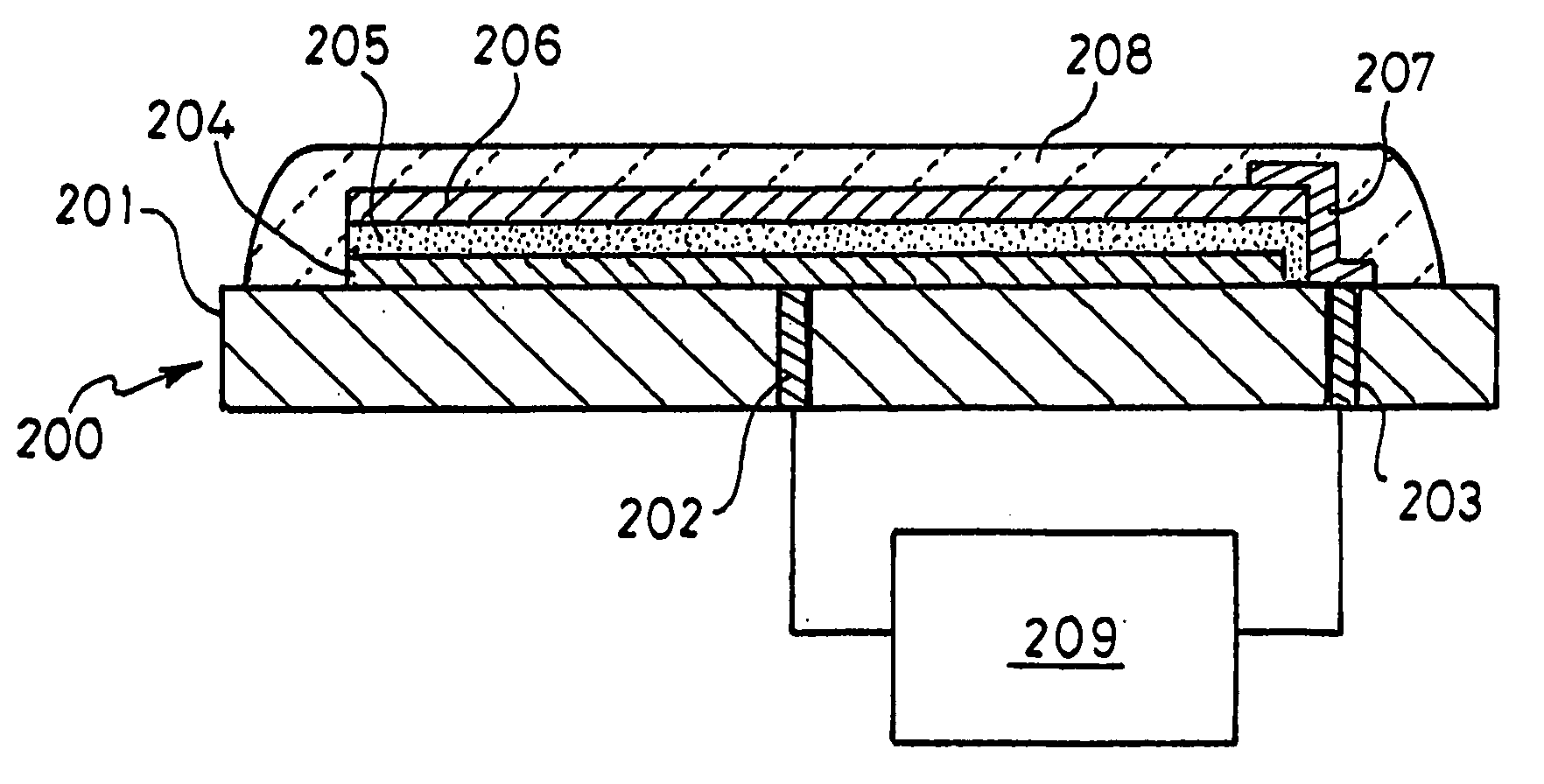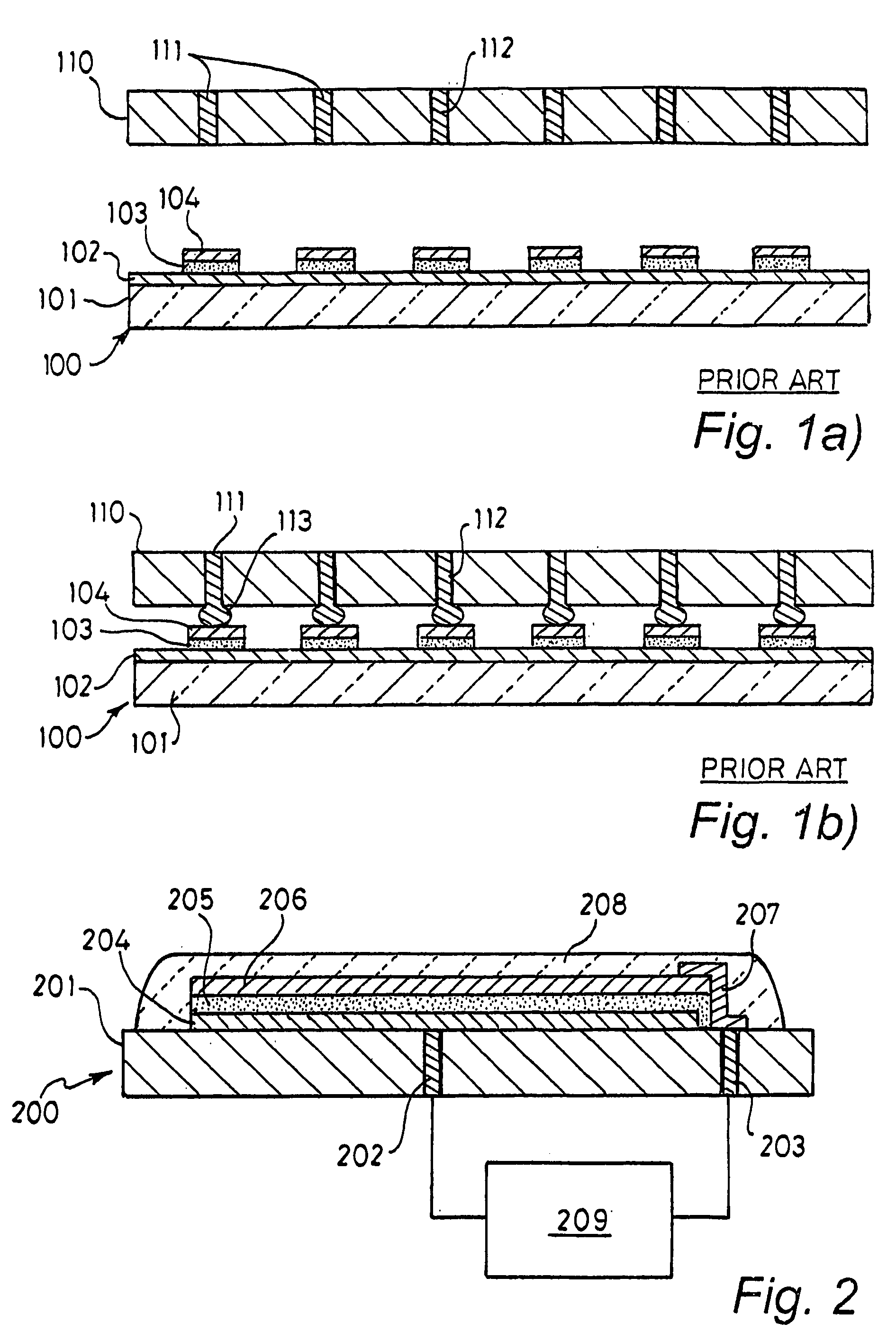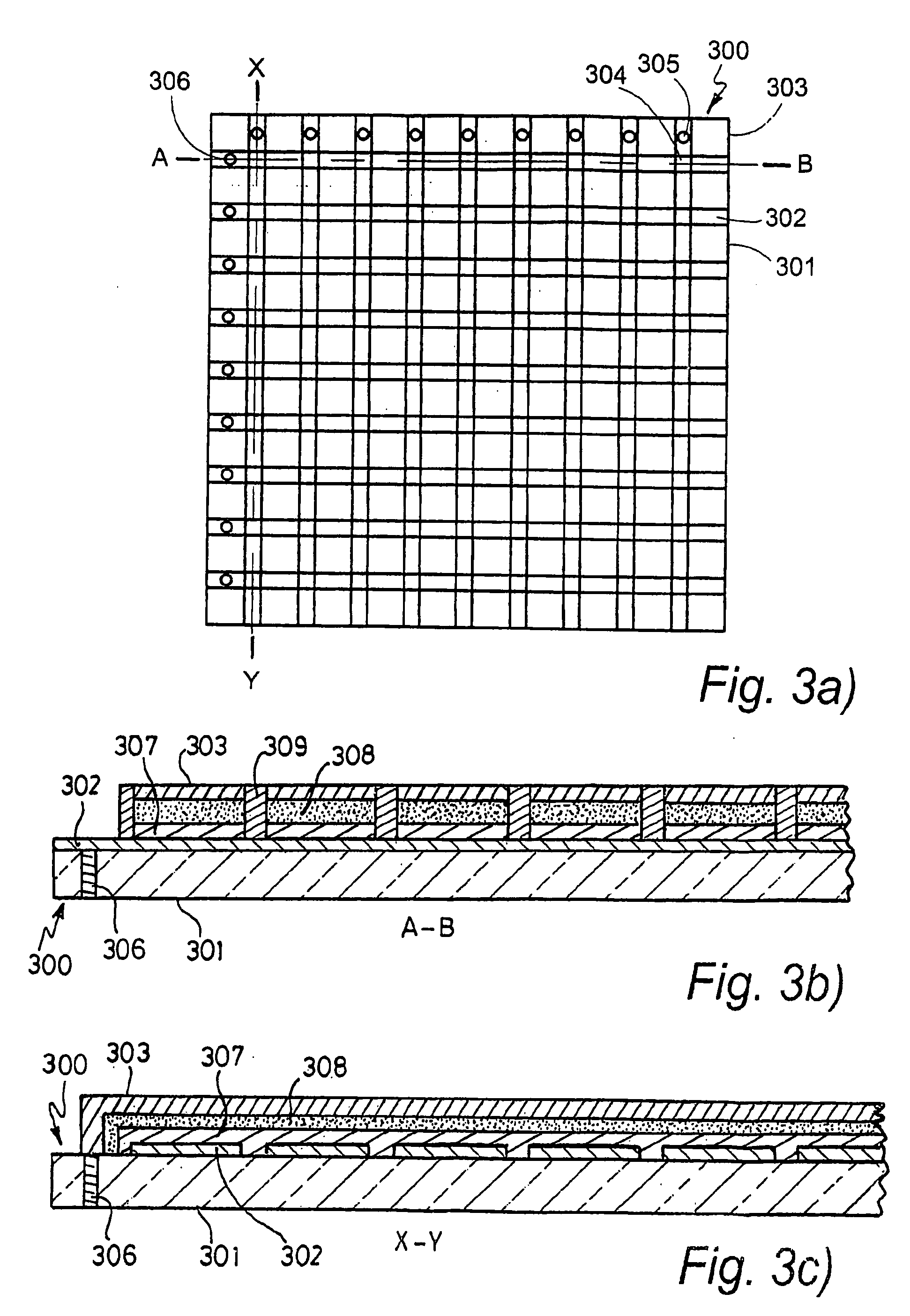Organic optoelectronic device
a technology of optoelectronic devices and optical contacts, which is applied in the direction of solid-state devices, semiconductor devices, electrical apparatus, etc., can solve the problems of difficult connection in this manner, difficult to connect driving electronics to the edge of the substrate, and complex routing of electrical contacts, etc., to achieve better appearance, less black spots, and longer life
- Summary
- Abstract
- Description
- Claims
- Application Information
AI Technical Summary
Benefits of technology
Problems solved by technology
Method used
Image
Examples
Embodiment Construction
[0064] An optoelectronic device according to the present invention is shown in FIG. 2. The optoelectronic device 200 comprises a substrate 201 through which connecting vias 202203 have been provided. Over the upper surface of the substrate 201 and in electrical contact with via 202 lies a layer of anode material 204. The anode is in turn covered by a layer of organic optoelectronic material 205 over which lies the cathode 206. An electrical connector 207 serves to connect the cathode 206 to via 203. The organic diode is encapsulated with a layer of passivating material 208 and the anode and cathode are connected to driving circuitry 209.
[0065] The substrate may be rigid or flexible and is generally opaque although in some cases a transparent or semi-transparent substrate may be used.
[0066] The substrate typically comprises a material selected from the group comprising ceramics and plastics. The term ceramic is taken to include both ceramics and glasses. Ceramics include high tempe...
PUM
| Property | Measurement | Unit |
|---|---|---|
| Electrical conductor | aaaaa | aaaaa |
| Transparency | aaaaa | aaaaa |
| Semiconductor properties | aaaaa | aaaaa |
Abstract
Description
Claims
Application Information
 Login to View More
Login to View More - R&D
- Intellectual Property
- Life Sciences
- Materials
- Tech Scout
- Unparalleled Data Quality
- Higher Quality Content
- 60% Fewer Hallucinations
Browse by: Latest US Patents, China's latest patents, Technical Efficacy Thesaurus, Application Domain, Technology Topic, Popular Technical Reports.
© 2025 PatSnap. All rights reserved.Legal|Privacy policy|Modern Slavery Act Transparency Statement|Sitemap|About US| Contact US: help@patsnap.com



